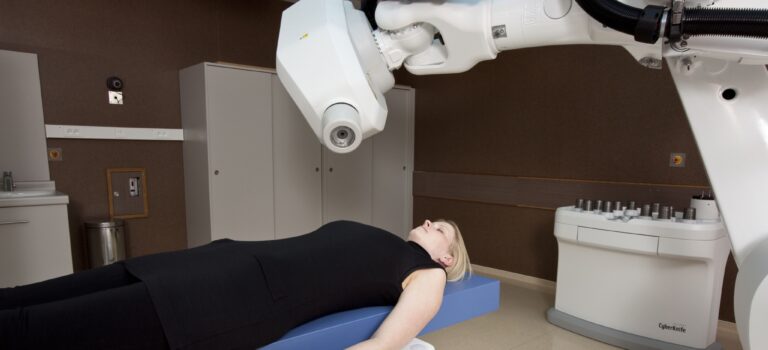
Researchers use Orfit immobilization devices and masks to evaluate new treatment techniques to further improve the delivery of radiation therapy
Orfit develops highly precise patient positioning and immobilization devices for cancer patients. By investing in new production techniques and utilizing new materials, Orfit continues to evolve its systems to meet the needs of new treatment devices and techniques including adopting new materials to support MR simulation, proton and particle therapies, and MR-guided treatment delivery.
We are motivated to push the boundaries of precision and accuracy that can lead to improved treatment outcomes for all patients treated using any treatment modality.
These studies highlight how Orfit’s highly precise immobilization systems are being used at leading research institutions to develop new treatment techniques and workflows to advance clinical outcomes for cancer therapy:
Recent Studies:
Chemical exchange saturation transfer MRI in central nervous system (CNS) tumours on a 1.5 T MR-Linac
Head and neck IMPT probabilistic dose accumulation: Feasibility of a 2 mm setup uncertainty setting
Automatic treatment planning for VMAT-based total body irradiation using Eclipse scripting
Other Clinical Evaluation Highlights:
Comparison of head immobilization with a metal frame and two different models of face masks
Comparison of three immobilisation systems for radiation therapy in head and neck cancer
Migration from full-head mask to “open-face” mask for immobilization of patients with head and neck cancer
Repositioning accuracy of a commercially available thermoplastic mask system
Recent Studies
Chemical exchange saturation transfer MRI in central nervous system (CNS) tumours on a 1.5 T MR-Linac
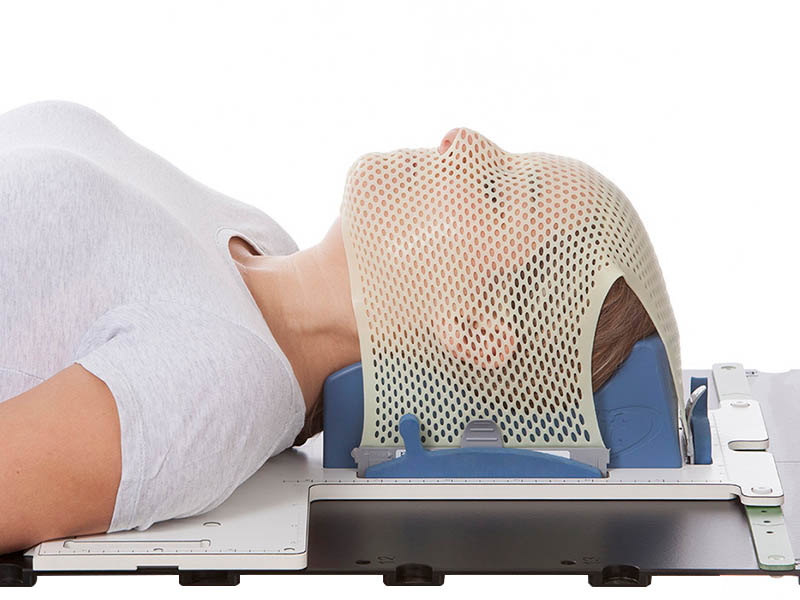 MR-guided radiation therapy shows promise in significantly reducing treatment margins and improving treatment outcomes by integrating adaptive planning into the delivery of each fraction. A recent study conducted by a global team of researchers evaluated the Elekta Unity 1.5T MR-Linac with an Orfit thermoplastic mask system for use in a new in vivo imaging protocol using chemical exchange saturation transfer (CEST) imaging.
MR-guided radiation therapy shows promise in significantly reducing treatment margins and improving treatment outcomes by integrating adaptive planning into the delivery of each fraction. A recent study conducted by a global team of researchers evaluated the Elekta Unity 1.5T MR-Linac with an Orfit thermoplastic mask system for use in a new in vivo imaging protocol using chemical exchange saturation transfer (CEST) imaging.
The study included 54 CNS patients and demonstrated the use of Orfit thermoplastic masks for delivering treatments ranging from 60 Gy in 30 fractions to 27.5 Gy in 5 fractions. Obtaining tumor metabolic information on the MR-Linac has the potential to improve treatment monitoring and provide additional information for use in adaptive radiotherapy protocols.
Reference: Rachel W. Chan, Liam S.P. Lawrence, Ryan T. Oglesby, Hanbo Chen, James Stewart, Aimee Theriault, Mikki Campbell, Mark Ruschin, Sten Myrehaug, Eshetu G. Atenafu, Brian Keller, Brige Chugh, Scott MacKenzie, Chia-Lin Tseng, Jay Detsky, Pejman. Maralani, Greg Czarnota, Greg J. Stanisz, Arjun Sahgal, Angus Z. Lau; Radiotherapy and Oncology 2021, Jul 17; 162 (2021) 140–149
.
Head and neck IMPT probabilistic dose accumulation: Feasibility of a 2 mm setup uncertainty setting
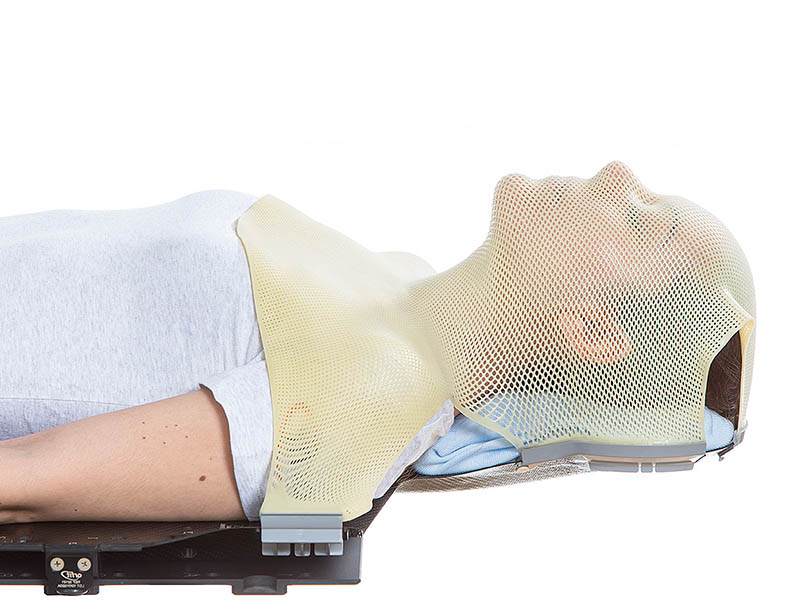 Proton therapy has already been proven to reduce the radiation dose delivered to healthy tissue and has led to significantly improved treatment outcomes for some patients. A recently published study conducted in The Netherlands using intensity-modulated proton therapy delivered on an IBA Proteus® Plus planned with Raysearch Laboratories Raystation v6.1 with patients immobilized using the Orfit Industries HP PRO 5-point thermoplastic masks has shown that margin reduction below 3 mm/3% is possible. Patients not only benefit from the dose distributions attributed to a proton therapy system, but also can benefit from the improved accuracy of the studied clinical treatment system.
Proton therapy has already been proven to reduce the radiation dose delivered to healthy tissue and has led to significantly improved treatment outcomes for some patients. A recently published study conducted in The Netherlands using intensity-modulated proton therapy delivered on an IBA Proteus® Plus planned with Raysearch Laboratories Raystation v6.1 with patients immobilized using the Orfit Industries HP PRO 5-point thermoplastic masks has shown that margin reduction below 3 mm/3% is possible. Patients not only benefit from the dose distributions attributed to a proton therapy system, but also can benefit from the improved accuracy of the studied clinical treatment system.
Reference: Dirk Wagenaar, Roel G.J. Kierkels, Arjen van der Schaaf, Arturs Meijers, Daniel Scandurra, Nanna M. Sijtsema, Erik W. Korevaar, Roel J.H.M. Steenbakkers, Antje C. Knopf, Johannes A. Langendijk, Stefan Both; Radiotherapy and Oncology 2020, Sep 6; 154 (2021) 45-52
.
Automatic treatment planning for VMAT-based total body irradiation using Eclipse scripting
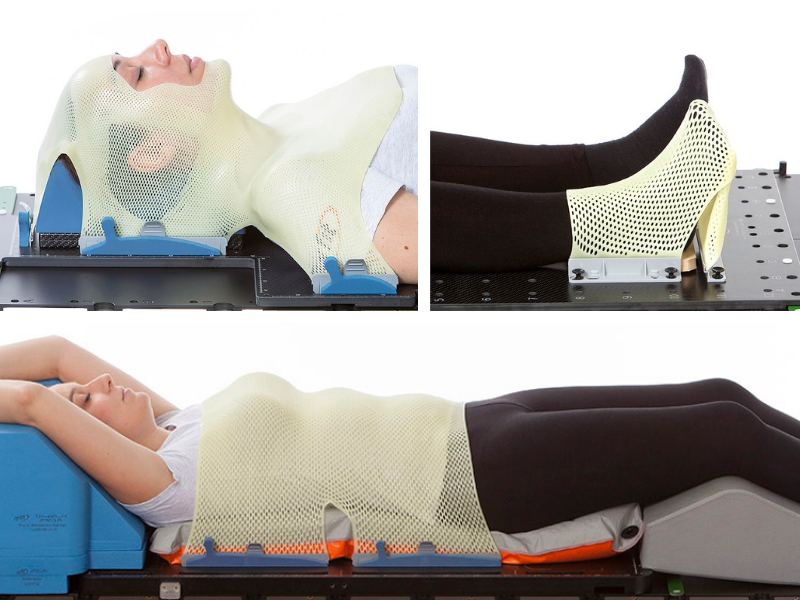 Total Body Irradiation (TBI) is frequently administered along with chemotherapy for leukemia both to treat the disease and to suppress the patient’s immune system. TBI is typically delivered using a treatment field encompassing the whole body delivered at an extended distance with radiation-induced interstitial pneumonitis occurring in about 25% of patients.
Total Body Irradiation (TBI) is frequently administered along with chemotherapy for leukemia both to treat the disease and to suppress the patient’s immune system. TBI is typically delivered using a treatment field encompassing the whole body delivered at an extended distance with radiation-induced interstitial pneumonitis occurring in about 25% of patients.
A new delivery method has been developed that significantly reduces dose to organs at risk and utilizes multiple VMAT treatment isocenters along the patient’s entire body. Orfit thermoplastic masks were used to immobilize the head, body, and legs of healthy volunteers to ensure that patient’s position is maintained for image acquisition.
Reference: Jose R. Terual, Sameer Taneja, Paulina E. Galavis, K. Sunshine Osterman, Allison McCarthy, Martha Malin, Naamit K. Gerber, Christine Hitchen. David L. Barbee; Journal of Applied Clinical Medical Physics 2021 Jan 09; 22:3:119-130
Other Clinical Evaluation Highlights
Over the years, Orfit’s solutions have been evaluated by multiple researchers and clinicians and have repeatedly been shown to meet or exceed the requirements. Here is a brief review of some of these studies.
.
Comparison of head immobilization with a metal frame and two different models of face masks
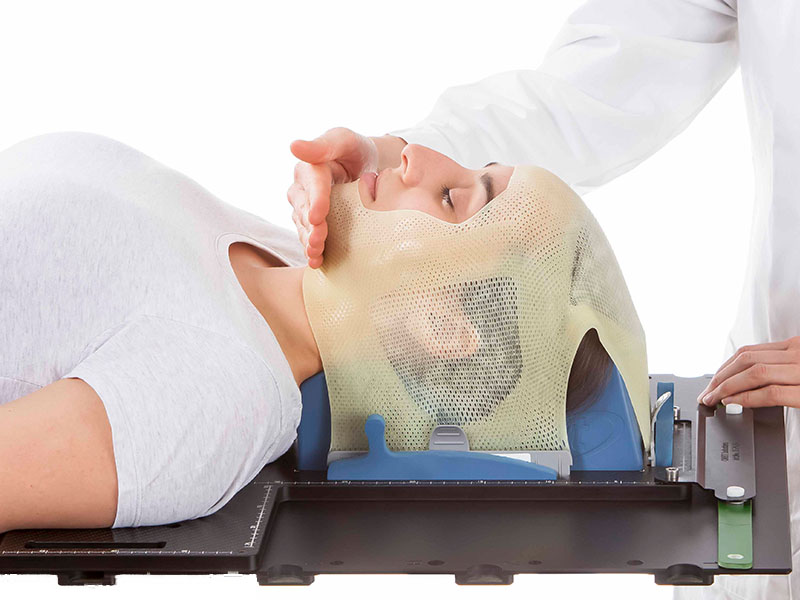 An evaluation conducted at the Department of Cancer, West Michigan Cancer Center showed that both the Orfit model 33759 3-point Hybrid open face thermoplastic mask and the Orfit open face mask with Nanor reinforcement immobilize patients to less than 0.4 mm of motion, meeting the requirements for the delivery of stereotactic radiosurgery.
An evaluation conducted at the Department of Cancer, West Michigan Cancer Center showed that both the Orfit model 33759 3-point Hybrid open face thermoplastic mask and the Orfit open face mask with Nanor reinforcement immobilize patients to less than 0.4 mm of motion, meeting the requirements for the delivery of stereotactic radiosurgery.
Reference: Paul Jursinic; J Cancer Cure. 2018; 1(1): 1002
.
Comparison of three immobilisation systems for radiation therapy in head and neck cancer
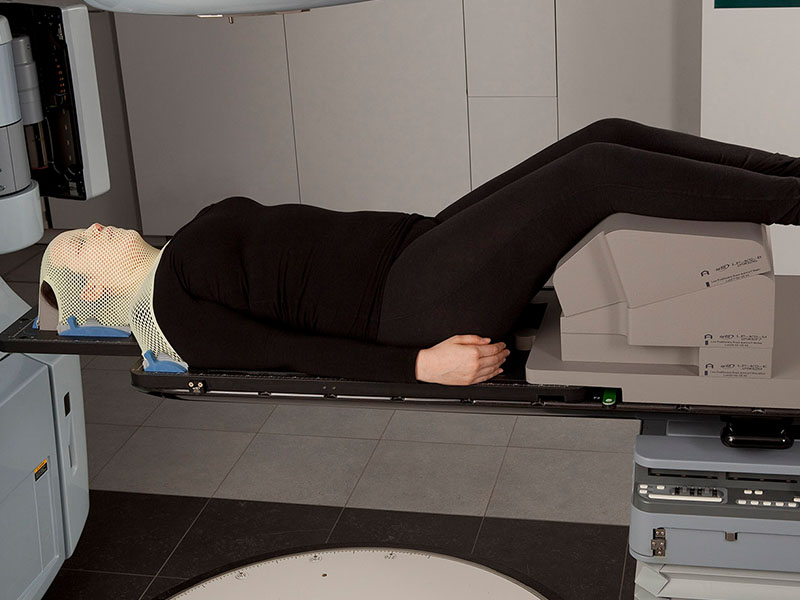 An evaluation conducted at the Odense University Hospital showed that the Orfit AIO system together with the Orfit pre-cut, 5-point reinforced Efficast thermoplastic mask was more precise than the two other immobilization systems evaluated in the study.
An evaluation conducted at the Odense University Hospital showed that the Orfit AIO system together with the Orfit pre-cut, 5-point reinforced Efficast thermoplastic mask was more precise than the two other immobilization systems evaluated in the study.
Reference: Christian Rønn Hansen, Rasmus Lübeck Christiansen, Tine Bjørn Nielsen, Anders Smedegaard Bertelsen, Jørgen Johansen & Carsten Brink; Acta Oncologica 2014; 53(3) 423-427
.
Migration from full-head mask to “open-face” mask for immobilization of patients with head and neck cancer
 An evaluation conducted at Memorial Sloan-Kettering Cancer Center showed that the Orfit 3-point open face thermoplastic mask exceeded the requirements for treating head and neck cancers using optical surface imaging with absolute head motion during 15 minutes of 1.0 mm +/- 0.5 mm. The study concluded that the open face mask improves patient comfort and tolerability.
An evaluation conducted at Memorial Sloan-Kettering Cancer Center showed that the Orfit 3-point open face thermoplastic mask exceeded the requirements for treating head and neck cancers using optical surface imaging with absolute head motion during 15 minutes of 1.0 mm +/- 0.5 mm. The study concluded that the open face mask improves patient comfort and tolerability.
Reference: Guang Li, D Michael Lovelock, James Mechalakos, Shyam Rao, Cesar Della-Biancia, Howard Amols, Nancy Lee’; J Appl Clin Med Phys. 2013 Sep 6;14(5):243-54
.
Repositioning accuracy of a commercially available thermoplastic mask system
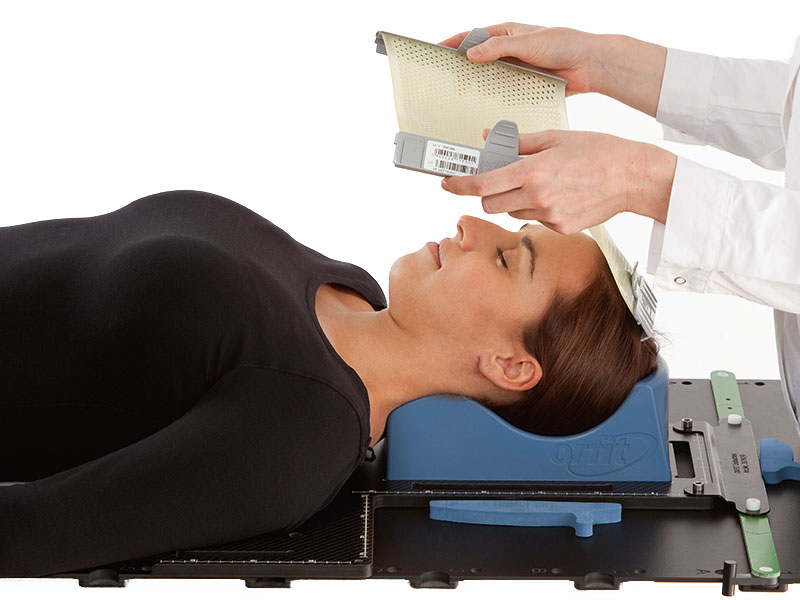
An evaluation conducted at the Division of Radiological Sciences, University of Texas Health Science Center at San Antonio showed that the repositioning of the Orfit HP mask system performed favorably compared with other mask immobilization systems with a patient repositioning accuracy of less than 2 mm.
Reference: Martin Fuss, Bill J Salter, Dennis Cheek, Amir Sadeghi, James M Hevezi, Terence S Herman; Radiotherapy & Oncology 2004 Jun 01; 71(3) 339-345
Click here to learn more about Orfit’s latest innovations in Radiation Oncology.
If you’d like to receive the latest product updates and interesting Orfit news, subscribe to our newsletter:


